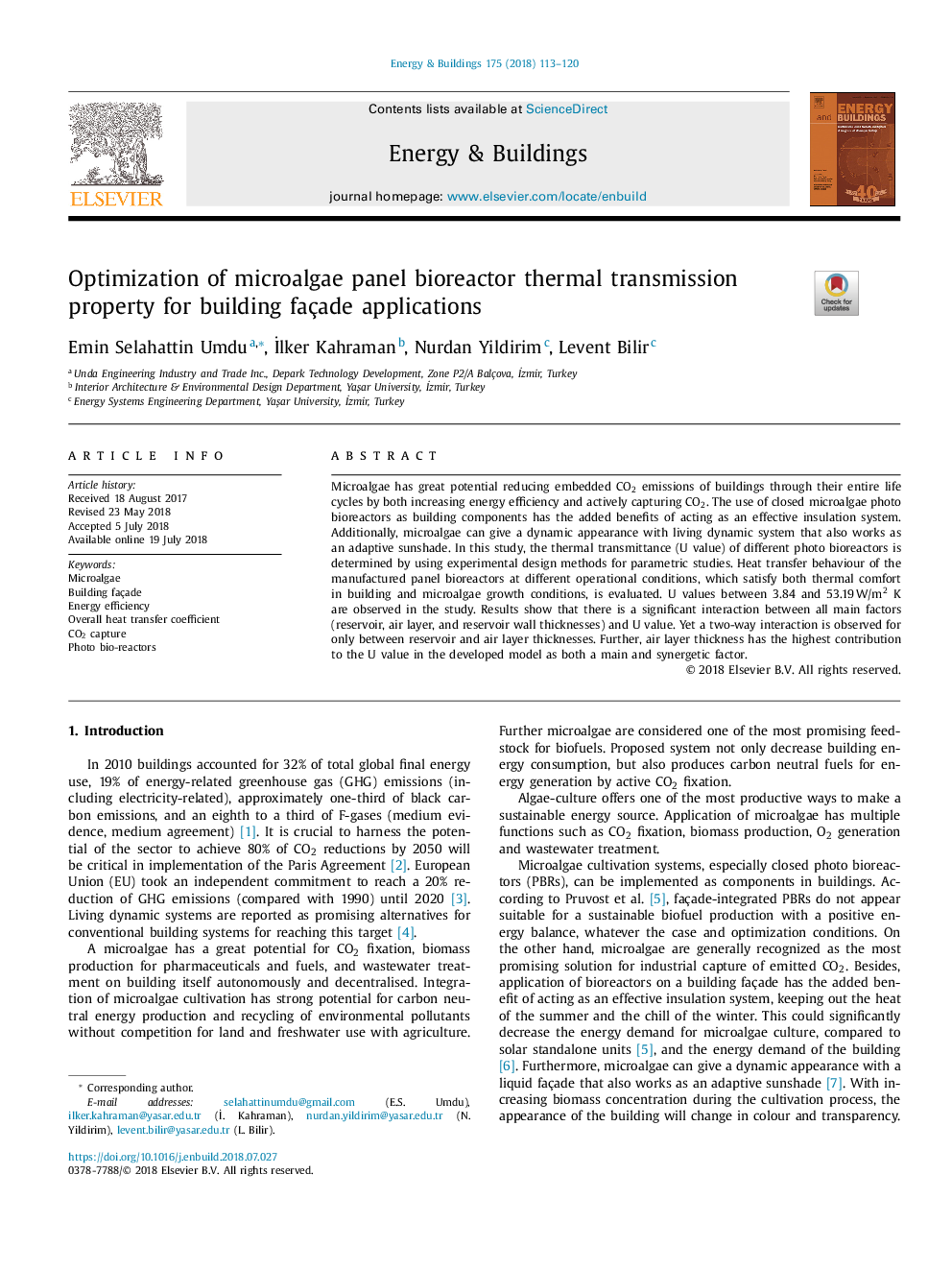| Article ID | Journal | Published Year | Pages | File Type |
|---|---|---|---|---|
| 6727092 | Energy and Buildings | 2018 | 8 Pages |
Abstract
Microalgae has great potential reducing embedded CO2 emissions of buildings through their entire life cycles by both increasing energy efficiency and actively capturing CO2. The use of closed microalgae photo bioreactors as building components has the added benefits of acting as an effective insulation system. Additionally, microalgae can give a dynamic appearance with living dynamic system that also works as an adaptive sunshade. In this study, the thermal transmittance (U value) of different photo bioreactors is determined by using experimental design methods for parametric studies. Heat transfer behaviour of the manufactured panel bioreactors at different operational conditions, which satisfy both thermal comfort in building and microalgae growth conditions, is evaluated. U values between 3.84 and 53.19â¯W/m2 K are observed in the study. Results show that there is a significant interaction between all main factors (reservoir, air layer, and reservoir wall thicknesses) and U value. Yet a two-way interaction is observed for only between reservoir and air layer thicknesses. Further, air layer thickness has the highest contribution to the U value in the developed model as both a main and synergetic factor.
Related Topics
Physical Sciences and Engineering
Energy
Renewable Energy, Sustainability and the Environment
Authors
Emin Selahattin Umdu, Ä°lker Kahraman, Nurdan Yildirim, Levent Bilir,
